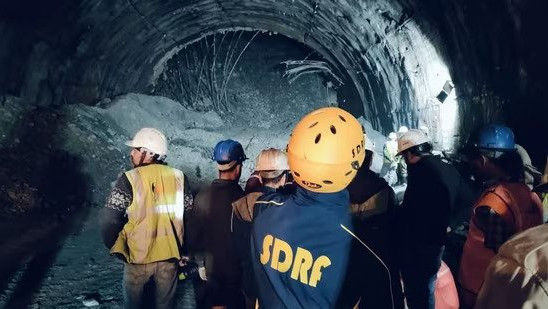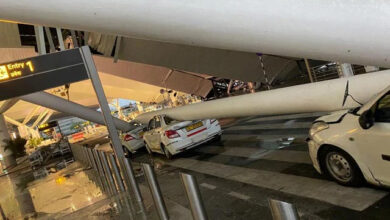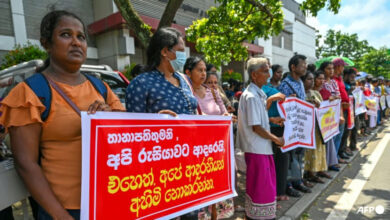India bid to free 41 trapped workers enters third week
The Indian air force said Sunday that they were "responding with alacrity", as they flew in their third load to a rescue operation since the partial collapse of the under-construction Silkyara road tunnel on 12 November in the Himalayan state of Uttarakhand

New Delhi: The rescue mission to free 41 trapped workers, stranded for three weeks since the partial collapse of the under-construction Silkyara road tunnel in the Himalayan state of Uttarakhand, has encountered further challenges despite persistent efforts. Indian military forces have intensified their response, bringing in specialized equipment as the operation extends into its third week.
The Indian air force announced on Sunday that they had flown in their third load of equipment to support the rescue mission. Among the new tools is a superheated plasma cutter, a crucial addition to the operation as engineers faced obstacles while driving a metal pipe horizontally through 57 meters of rock and concrete. The plasma cutter will be employed to remove a broken giant earth-boring drill and metal hindering the horizontal route before manual digging resumes.
The rescue team is contending with thick metal girders blocking the path, complicating the use of conventional oxyacetylene cutters within the confined space of the pipe. The air force noted that the “critical” equipment was sourced from the Defence Research and Development Organisation, the government’s defense technology research arm.
Uttarakhand Chief Minister Pushkar Singh Dhami reported on Saturday that vertical drilling had commenced, delving 89 meters downwards, posing additional risks in an area already affected by the collapse. Simultaneously, efforts are underway from the far side of the road tunnel, marking the third route estimated to be around 480 meters.
The trapped workers were first visually confirmed alive on Tuesday when an endoscopic camera was sent through a thin pipe, providing a lifeline for essential supplies like air, food, water, and electricity. Dhami assured that the workers remain in “good spirits,” with a basic telephone exchange established to facilitate communication between the trapped individuals and their families.
However, progress has been hampered by falling debris and repeated breakdowns of drilling machinery. Despite initial optimism for a breakthrough on Wednesday, the challenging Himalayan terrain has impeded swift advancements.
Family members of the trapped workers, many of whom hail from impoverished backgrounds across India, express frustration and anxiety. Indrajeet Kumar, whose brother Vishwajeet is among the trapped, voiced his concern, questioning why they are still stuck despite earlier reports suggesting a swift resolution.
Senior rescue official and retired general Syed Ata Hasnain called for patience, likening the operation to a “very difficult” and unpredictable endeavor. “When you do something with mountains, you cannot predict anything,” Hasnain remarked. “This situation is exactly like war.” As the rescue mission continues, the nation remains hopeful for a successful and safe extraction of the trapped workers.


![Mumtaz Zahra Baloch, spokesperson for Pakistan's Foreign Ministry, says the country believes in constructive dialogue with the US [Courtesy of Pakistan Ministry of Foreign Affairs]](https://southasiancorrespondent.com/wp-content/uploads/2024/06/pak-1-390x220.jpg)

